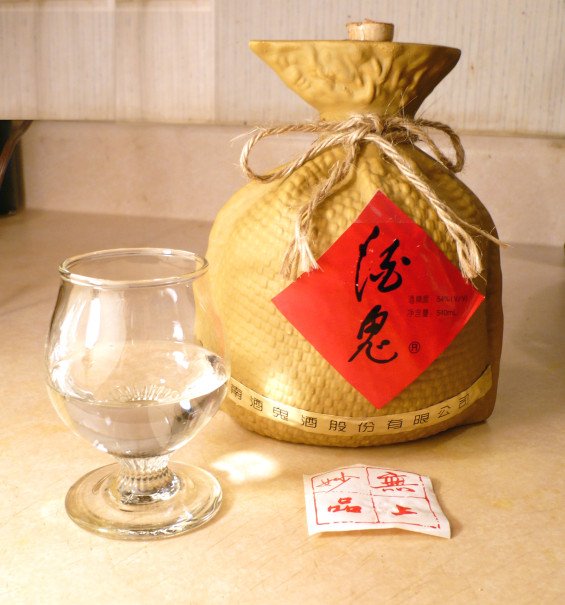
Thirst for Destruction

Thirst for Destruction
The other day, I opened a bottle of baijiu for my girlfriend at a dinner party we were hosting. Baijiu is a Chinese grain spirit. When I lived in Beijing in my 20s, from 2006 to 2011, my friends and I mostly drank a brand called Erguotou, or “two pots distilled,” which came in a musty green bottle, retailed for under a dollar, and tasted like destruction.
Erguotou was useless with cocktails—you couldn’t any more mask its vomit-y bouquet than you could geld a bull with a spoon. And gulping it was preferable to sipping it, of course. It was so hard to drink, and it was so hard to drink just a little, that nights tended to dissolve. In Beijing, a surprisingly unregulated city for expats, Erguotou was a convenient justification for the mistakes I made as an adult-child. Prancing around the street through the cars, obliviously. The women, especially those whom I never wanted to talk to sober. The callousness. Dressed as a Chinese waitress one Halloween, I debated the nature of violence for hours, then slapped a stranger. Soon after that, I knew it was time to leave.
I learned a lot, but I’m glad that period of my life is over. When we held up our shot glasses for a toast, Erguotou always looked slightly cloudy, like children’s tears.
That other day, when I brought out the bottle of baijiu, I grinned. The Erguotou had been exported to Washington, DC, just like me. Beijing is to DC like baijiu is to a wine cooler. Still, I expected the spirit to maintain at least some of its fetid fierceness.
“Beware,” I said proudly.
My girlfriend took a healthy gulp, and grimaced minimally.
“That’s not so bad,” she said. I sipped it, too, and had to agree. The spirit had mellowed. “Where’s the carnage in that?” I thought to myself.
I put it back into my cabinet, and haven’t touched it since.